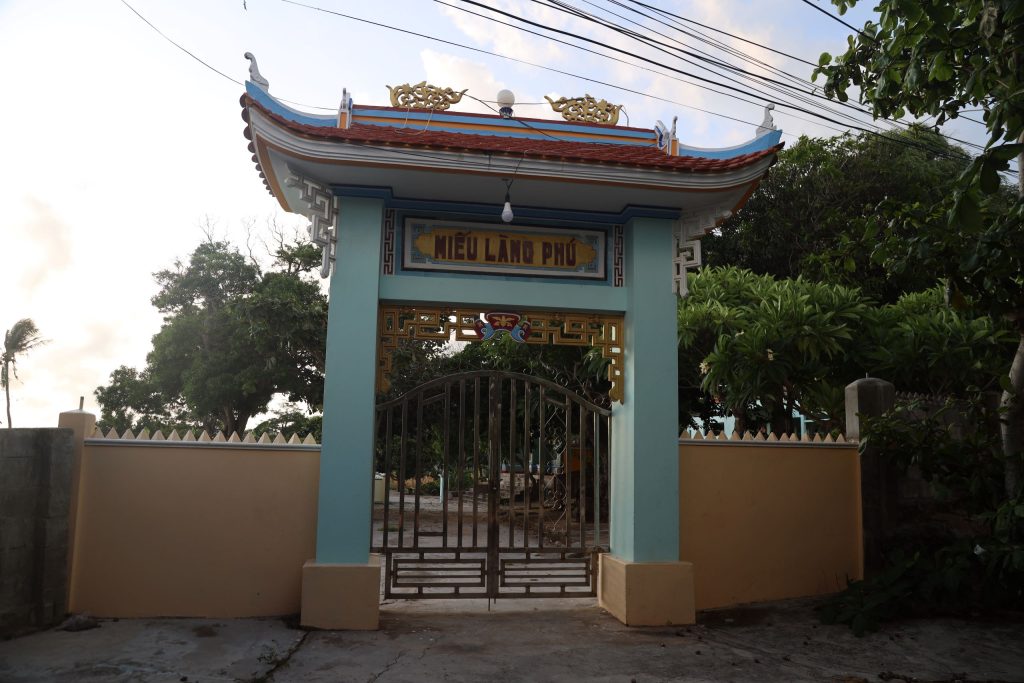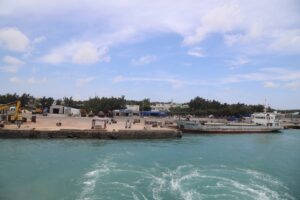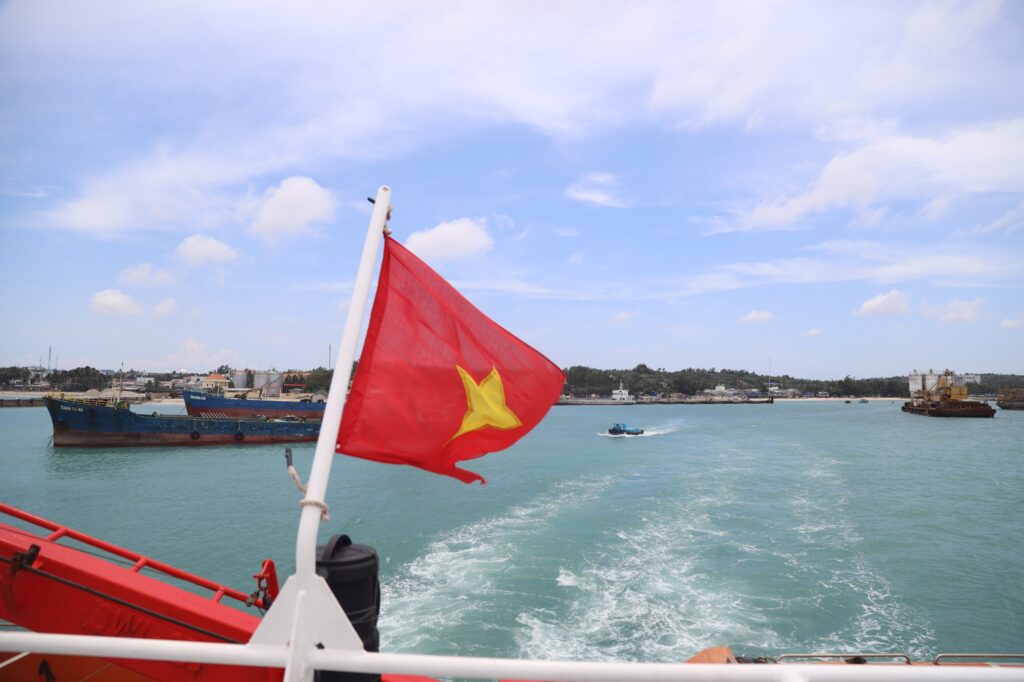The Phú Mỹ Communal House, also known locally as the Phú Village Temple (Miếu Làng Phú), is located in Phú Mỹ Village — a merger of the former Phú Ninh and Mỹ Xuyên villages — in Ngũ Phụng Commune. It was built in 1813.
Phú Mỹ Village lies along the inter-communal road and spans an area of approximately 40,000 square meters. Its boundaries are: to the east, the coastal area of Cội Hamlet (Phú Long village); to the north and west, Long Hải Commune; and to the south, An Hòa Village (Phú An Hamlet, also part of Ngũ Phụng Commune).
At the time of its official formation (February 25, 1909), Phú Mỹ Village had a population of about 200 people. The villagers mainly relied on farming, livestock raising, and shoreline fishing using drag nets. Life was difficult and resources were limited.
A noteworthy cultural feature across Phú Quý Island is that most places of worship are commonly referred to by locals as “miếu” (temple or shrine), regardless of their official designation. For example, the Miếu Thành Hoàng of Mỹ Khê Village and the Miếu Làng Phú — which worships the village tutelary deity typically associated with a communal house (đình) — are still called miếu, and this term is also inscribed above the main entrance gate.
The original royal decree (sắc phong) bestowed upon Phú Mỹ Communal House has been lost. Currently, only the royal decree of the Bạch Mã Thái Giám Shrine (Đền Bạch Mã Thái Giám) remains preserved. Each year, two major ritual ceremonies are held at the Phú Mỹ Communal House: the Spring Offering (Tế Xuân) in the first lunar month and the Autumn Offering (Tế Thu) in the seventh lunar month.










